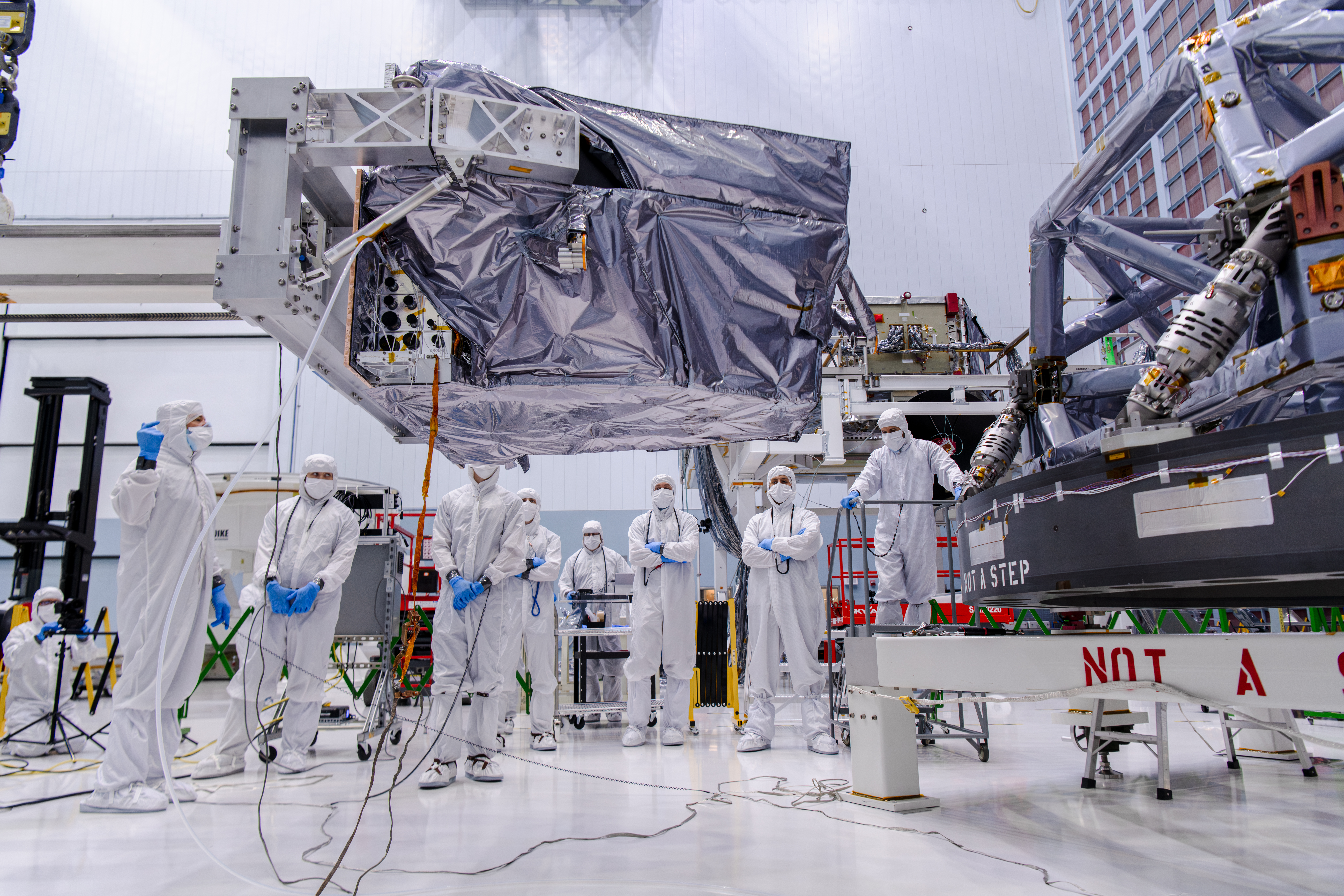6 min read
Preparations for Next Moonwalk Simulations Underway (and Underwater) 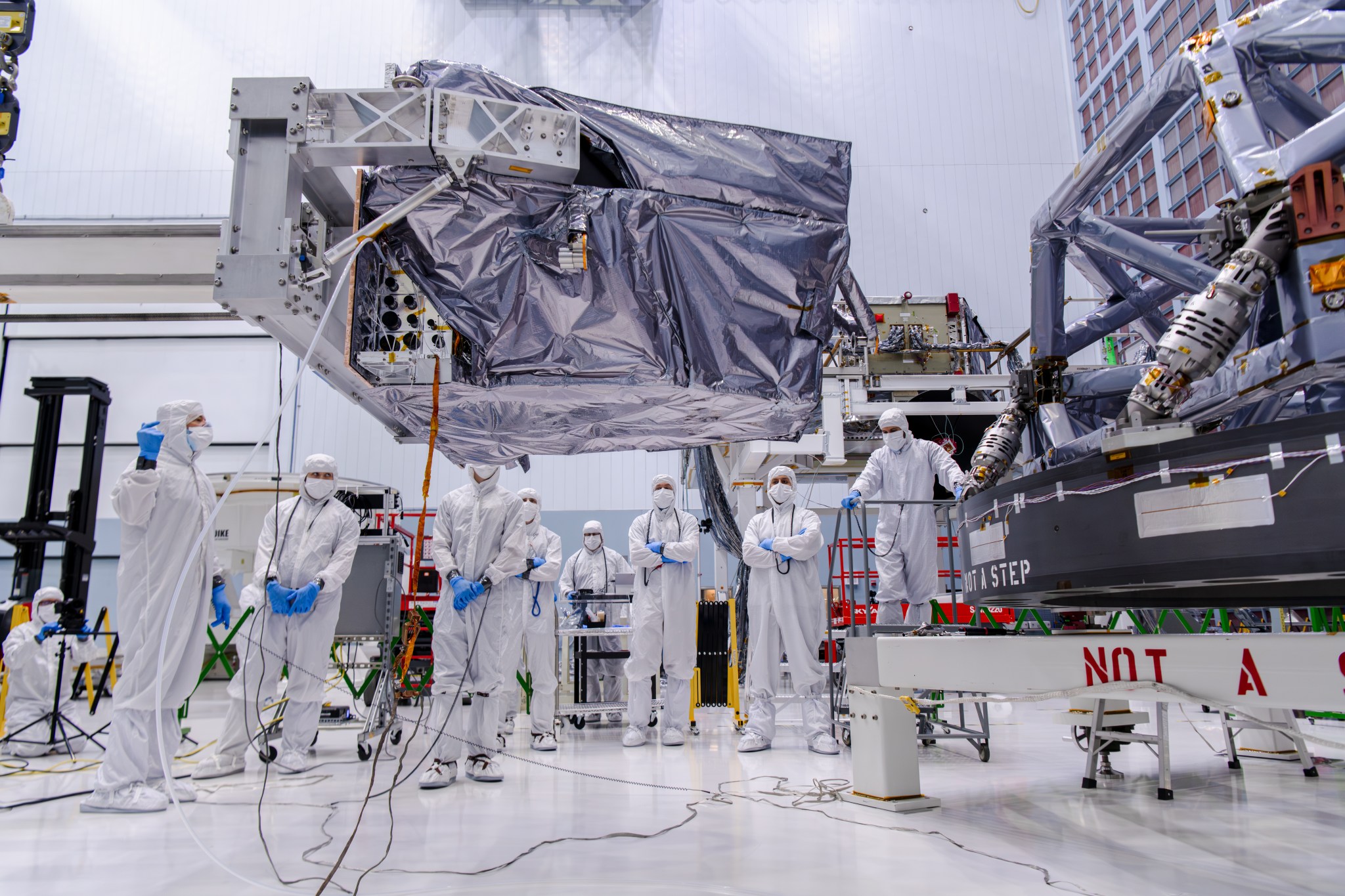 The Roman Coronagraph is integrated with the Instrument Carrier for NASA’s Nancy Grace Roman Space Telescope in a clean room at NASA’s Goddard Space Flight Center in Greenbelt, Md., in October 2024.NASA/Sydney Rohde
The Roman Coronagraph is integrated with the Instrument Carrier for NASA’s Nancy Grace Roman Space Telescope in a clean room at NASA’s Goddard Space Flight Center in Greenbelt, Md., in October 2024.NASA/Sydney Rohde
NASA’s Nancy Grace Roman Space Telescope team has successfully completed integration of the Roman Coronagraph Instrument onto Roman’s Instrument Carrier, a piece of infrastructure that will hold the mission’s instruments, which will be integrated onto the larger spacecraft at a later date. The Roman Coronagraph is a technology demonstration that scientists will use to take an important step in the search for habitable worlds, and eventually life beyond Earth.
This integration took place at NASA’s Goddard Space Flight Center in Greenbelt, Maryland, where the space telescope is located and in development. This milestone follows the coronagraph’s arrival at the center earlier this year from NASA’s Jet Propulsion Laboratory (JPL) in Southern California where the instrument was developed, built, and tested.
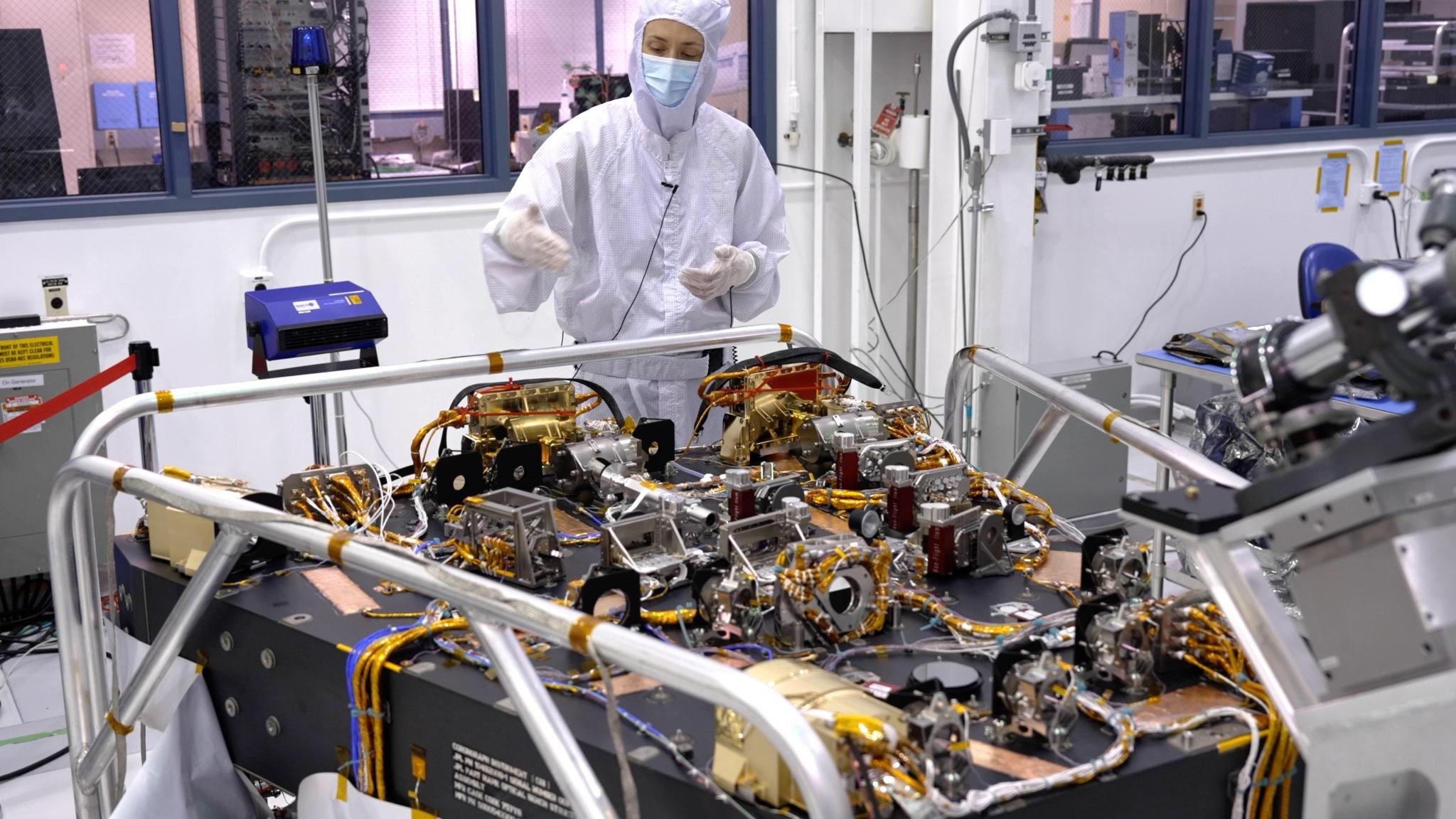 In a clean room at NASA’s Jet Propulsion Laboratory in Southern California in October 2023, scientist Vanessa Bailey stands behind the Roman Coronagraph, which has been undergoing testing at the lab. Designed to block starlight and allow scientists to see the faint light from planets outside our solar system, the Coronagraph is a technology demonstration that will be part of the Roman telescope.NASA/JPL-Caltech The Roman Coronagraph Instrument is a technology demonstration that will launch aboard the Nancy Grace Roman Space Telescope, NASA’s next flagship astrophysics mission. Roman will have a field of view at least 100 times larger than the agency’s Hubble Space Telescope and explore scientific mysteries surrounding dark energy, exoplanets, and infrared astrophysics. Roman is expected to launch no later than May 2027.
In a clean room at NASA’s Jet Propulsion Laboratory in Southern California in October 2023, scientist Vanessa Bailey stands behind the Roman Coronagraph, which has been undergoing testing at the lab. Designed to block starlight and allow scientists to see the faint light from planets outside our solar system, the Coronagraph is a technology demonstration that will be part of the Roman telescope.NASA/JPL-Caltech The Roman Coronagraph Instrument is a technology demonstration that will launch aboard the Nancy Grace Roman Space Telescope, NASA’s next flagship astrophysics mission. Roman will have a field of view at least 100 times larger than the agency’s Hubble Space Telescope and explore scientific mysteries surrounding dark energy, exoplanets, and infrared astrophysics. Roman is expected to launch no later than May 2027.
The mission’s coronagraph is designed to make direct observations of exoplanets, or planets outside of our solar system, by using a complex suite of masks and active mirrors to obscure the glare of the planets’ host stars, making the planets visible. Being a technology demonstration means that the coronagraph’s goal is to test this technology in space and showcase its capabilities. The Roman Coronagraph is poised to act as a technological stepping stone, enabling future technologies on missions like NASA’s proposed Habitable Worlds Observatory, which would be the first telescope designed specifically to search for signs of life on exoplanets.
“In order to get from where we are to where we want to be, we need the Roman Coronagraph to demonstrate this technology,” said Rob Zellem, Roman Space Telescope deputy project scientist for communications at NASA Goddard. “We’ll be applying those lessons learned to the next generation of NASA flagship missions that will be explicitly designed to look for Earth-like planets.”
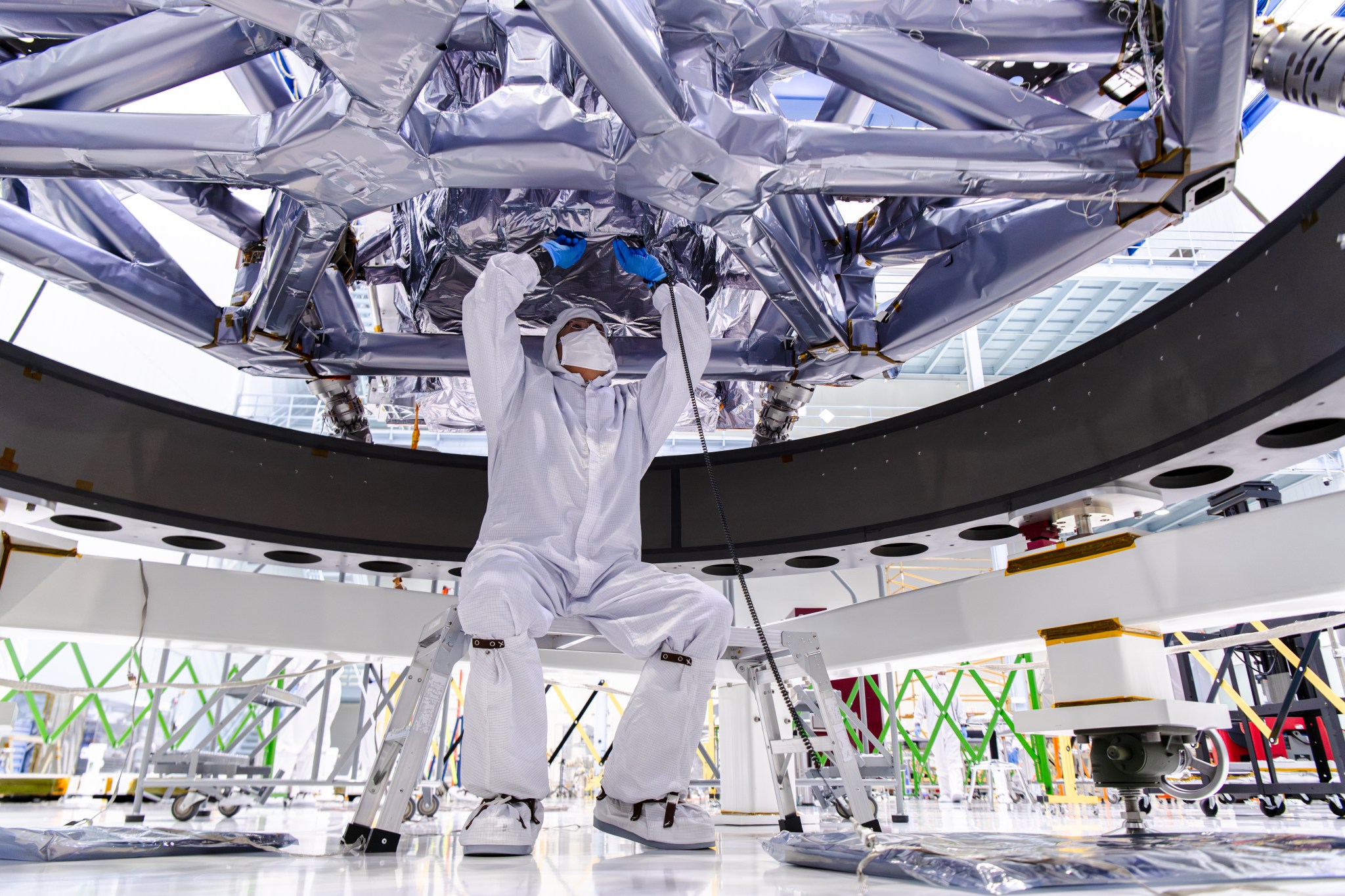 A team member works underneath the Instrument Carrier for Roman during the integration of the Coronagraph in a clean room at NASA Goddard in October 2024.NASA/Sydney Rohde A Major Mission Milestone
A team member works underneath the Instrument Carrier for Roman during the integration of the Coronagraph in a clean room at NASA Goddard in October 2024.NASA/Sydney Rohde A Major Mission Milestone
The coronagraph was successfully integrated into Roman’s Instrument Carrier, a large grid-like structure that sits between the space telescope’s primary mirror and spacecraft bus, which will deliver the telescope to orbit and enable the telescope’s functionality upon arrival in space. Assembly of the mission’s spacecraft bus was completed in September 2024.
The Instrument Carrier will hold both the coronagraph and Roman’s Wide Field Instrument, the mission’s primary science instrument, which is set to be integrated later this year along with the Roman telescope itself. “You can think of [the Instrument Carrier] as the skeleton of the observatory, what everything interfaces to,” said Brandon Creager, lead mechanical engineer for the Roman Coronagraph at JPL.
The integration process began months ago with mission teams from across NASA coming together to plan the maneuver. Additionally, after its arrival at NASA Goddard, mission teams ran tests to prepare the coronagraph to be joined to the spacecraft bus.
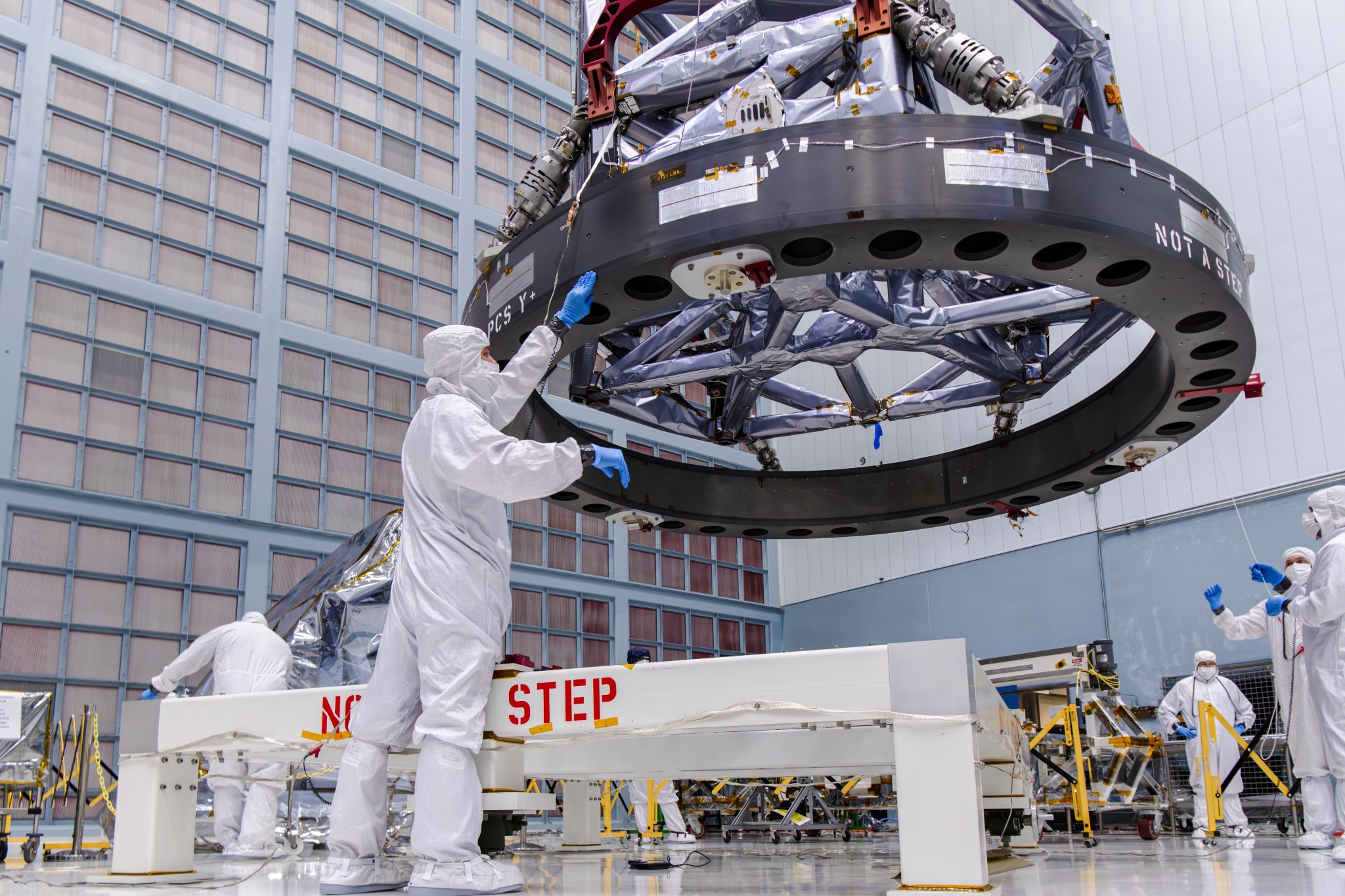 The Instrument Carrier for Roman is lifted during the integration of the Coronagraph in October 2024 at NASA Goddard.NASA/Sydney Rohde During the integration itself, the coronagraph, which is roughly the size and shape of a baby grand piano (measuring about 5.5 feet or 1.7 meters across), was mounted onto the Instrument Carrier using what’s called the Horizontal Integration Tool.
The Instrument Carrier for Roman is lifted during the integration of the Coronagraph in October 2024 at NASA Goddard.NASA/Sydney Rohde During the integration itself, the coronagraph, which is roughly the size and shape of a baby grand piano (measuring about 5.5 feet or 1.7 meters across), was mounted onto the Instrument Carrier using what’s called the Horizontal Integration Tool.
First, a specialized adapter developed at JPL was attached to the instrument, and then the Horizontal Integration Tool was attached to the adapter. The tool acts as a moveable counterweight, so the instrument was suspended from the tool as it was carefully moved into its final position in the Instrument Carrier. Then, the attached Horizontal Integration Tool and adapter were removed from the coronagraph. The Horizontal Integration Tool previously has been used for integrations on NASA’s Hubble and James Webb Space Telescope.
As part of the integration process, engineers also ensured blanketing layers were in place to insulate the coronagraph within its place in the Instrument Carrier. The coronagraph is designed to operate at room temperature, so insulation is critical to keep the instrument at the right temperature in the cold vacuum of space. This insulation also will provide an additional boundary to block stray light that could otherwise obscure observations.
Following this successful integration, engineers will perform different checks and tests to ensure that everything is connected properly and is correctly aligned before moving forward to integrate the Wide Field Instrument and the telescope itself. Successful alignment of the Roman Coronagraph’s optics is critical to the instrument’s success in orbit.
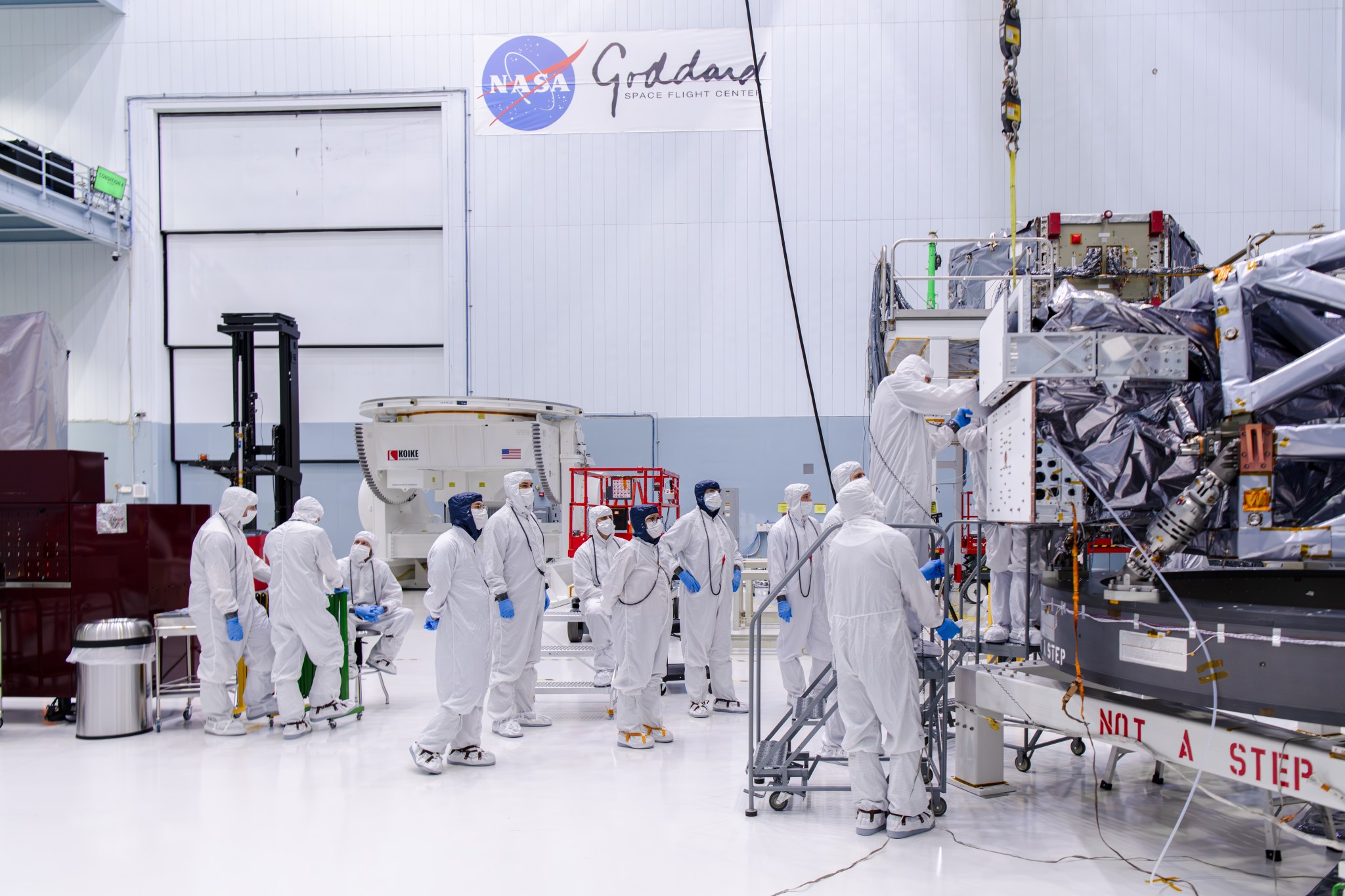 Team members stand together during the integration of the Roman Coronagraph in a clean room at NASA Goddard in October 2024. NASA/Sydney Rohde This latest mission milestone is the culmination of an enduring collaboration between a number of Roman partners, but especially between NASA Goddard and NASA JPL.
Team members stand together during the integration of the Roman Coronagraph in a clean room at NASA Goddard in October 2024. NASA/Sydney Rohde This latest mission milestone is the culmination of an enduring collaboration between a number of Roman partners, but especially between NASA Goddard and NASA JPL.
“It’s really rewarding to watch these teams come together and build up the Roman observatory. That’s the result of a lot of teams, long hours, hard work, sweat, and tears,” said Liz Daly, the integrated payload assembly integration and test lead for Roman at Goddard.
“Support and trust were shared across both teams … we were all just one team,” said Gasia Bedrosian, the integration and test lead for the Roman Coronagraph at JPL. Following the integration, “we celebrated our success together,” she added.
The Roman Coronagraph Instrument was designed and built at NASA JPL, which manages the instrument for NASA. Contributions were made by ESA (European Space Agency), JAXA (Japan Aerospace Exploration Agency), the French space agency CNES (Centre National d’Études Spatiales), and the Max Planck Institute for Astronomy in Germany. Caltech, in Pasadena, California, manages NASA JPL for the agency. The Roman Science Support Center at Caltech/IPAC partners with NASA JPL on data management for the Coronagraph and generating the instrument’s commands.
Virtually tour an interactive version of the telescope The Nancy Grace Roman Space Telescope is managed at NASA’s Goddard Space Flight Center in Greenbelt, Maryland, with participation by NASA’s Jet Propulsion Laboratory and Caltech/IPAC in Southern California, the Space Telescope Science Institute in Baltimore, and a science team comprising scientists from various research institutions. The primary industrial partners are BAE Systems Inc. in Boulder, Colorado; L3Harris Technologies in Rochester, New York; and Teledyne Scientific & Imaging in Thousand Oaks, California.
By Chelsea Gohd
NASA’s Jet Propulsion Lab, Pasadena, Calif.
Media Contact:
Claire Andreoli
claire.andreoli@nasa.gov
NASA’s Goddard Space Flight Center, Greenbelt, Md.
301-286-1940

